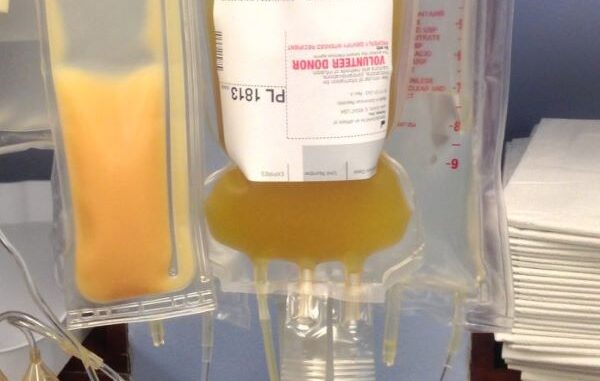
The infected blood inquiry in the UK published its final report on 20 May. It has detailed how thousands of people have died and many more exposed to contaminated blood, a scandal made worse by government cover-ups over decades. Victims and their families will rightly feel vindicated in their fight for justice.
We reprint here an article written by Jon Dale, Socialist Party member and retired doctor, in 2018, when the inquiry was first launched.
Over 25,000 people have been infected with contaminated blood products the NHS bought from profit-making pharmaceutical companies. Nearly 3,000 have died so far.
That’s the background to the Infected Blood Inquiry, which has only now started after 30 years of hard campaigning by victims and their families.
As recently as April 2017 the Tory public health minister resisted an inquiry. The Tories’ weak position since the general election made them back down.
From the late 1960s people lacking blood-clotting factors (haemophiliacs) could be treated with plasma products made from up to 60,000 blood donations. But if one donor carried a blood virus a whole batch could be contaminated.
Donors need to be healthy, especially if viruses can’t be tested for. The Blood Transfusion Service has always used screened volunteer donors, paid with nothing more than tea and biscuits.
In the US, commercial blood banks used paid donors – except in prisons where donors got five days off their sentence for each pint of blood.
Homeless or undernourished people, alcoholics and drug users are high-risk for carrying blood-borne viruses.
In the 1970s, the Blood Transfusion Service had insufficient laboratory capacity to meet demand for plasma products.
Labour’s right-wing minister of health, David Owen (who later split to form the Social Democratic Party), pledged £500,000 in 1975 (£4 million today) to increase capacity. However, the plan was never carried out. Imports from the US continued to grow.
1976 was when the Labour government caved into International Monetary Fund demands for public spending cuts. Were haemophiliacs infected by Hepatitis C and HIV after 1976 the casualties of those spending cuts?
A big US drug company was Cutter (now part of German giant, Bayer). Heat treatment to kill viruses was introduced in 1983.
Cutter continued selling untreated products for months to use up old stock and because it was cheaper to produce.
In 1983, Thatcher’s Tory government was warned by the head of the Communicable Diseases Surveillance Centre: “All blood products made from blood donated in the US after 1978 should be withdrawn from use until the risk of Aids transmission by these products has been clarified.” Health minister Ken Clarke ignored this.
Cover-up
Apparently government papers from the time have been ‘lost’. But it has emerged that in 1987 secretary of state John Moore issued a memo to the Tory cabinet on how to get the Thatcher government off the hook.
He proposed a £10 million “once-and-for-all payment” to victims, to be administered by the Haemophilia Society. “(This) is particularly attractive,” he wrote, “as it minimises government intervention; and it would be consistent with the policy of not accepting any direct responsibility for damage caused in this way.”
The Con-Dem coalition government privatised British plasma products capacity in 2013. Bain Capital, a US corporation, bought 80% for £230 million. It sold it in 2016 to a Chinese investment group for £820 million!
To uncover the full facts, an inquiry of patients, their families, health workers and trade unions is needed with powers to see all government and drug company papers.
Those who put profits first, refused to finance the services needed and tried to cover their tracks must be exposed. The system they defend stands guilty and must compensate those who suffered.
The pharmaceutical industry needs to be nationalised under democratic workers’ control, and to be run as a public service, integrated into the NHS and good public health systems throughout the world.
Special financial appeal to all readers of socialistworld.net |
Support building alternative socialist media Socialistworld.net provides a unique analysis and perspective of world events. Socialistworld.net also plays a crucial role in building the struggle for socialism across all continents. Capitalism has failed! Assist us to build the fight-back and prepare for the stormy period of class struggles ahead. Please make a donation to help us reach more readers and to widen our socialist campaigning work across the world. |
Donate via Paypal |
| M | T | W | T | F | S | S |
|---|---|---|---|---|---|---|
| 1 | 2 | 3 | 4 | 5 | ||
| 6 | 7 | 8 | 9 | 10 | 11 | 12 |
| 13 | 14 | 15 | 16 | 17 | 18 | 19 |
| 20 | 21 | 22 | 23 | 24 | 25 | 26 |
| 27 | 28 | 29 | 30 | 31 | ||

